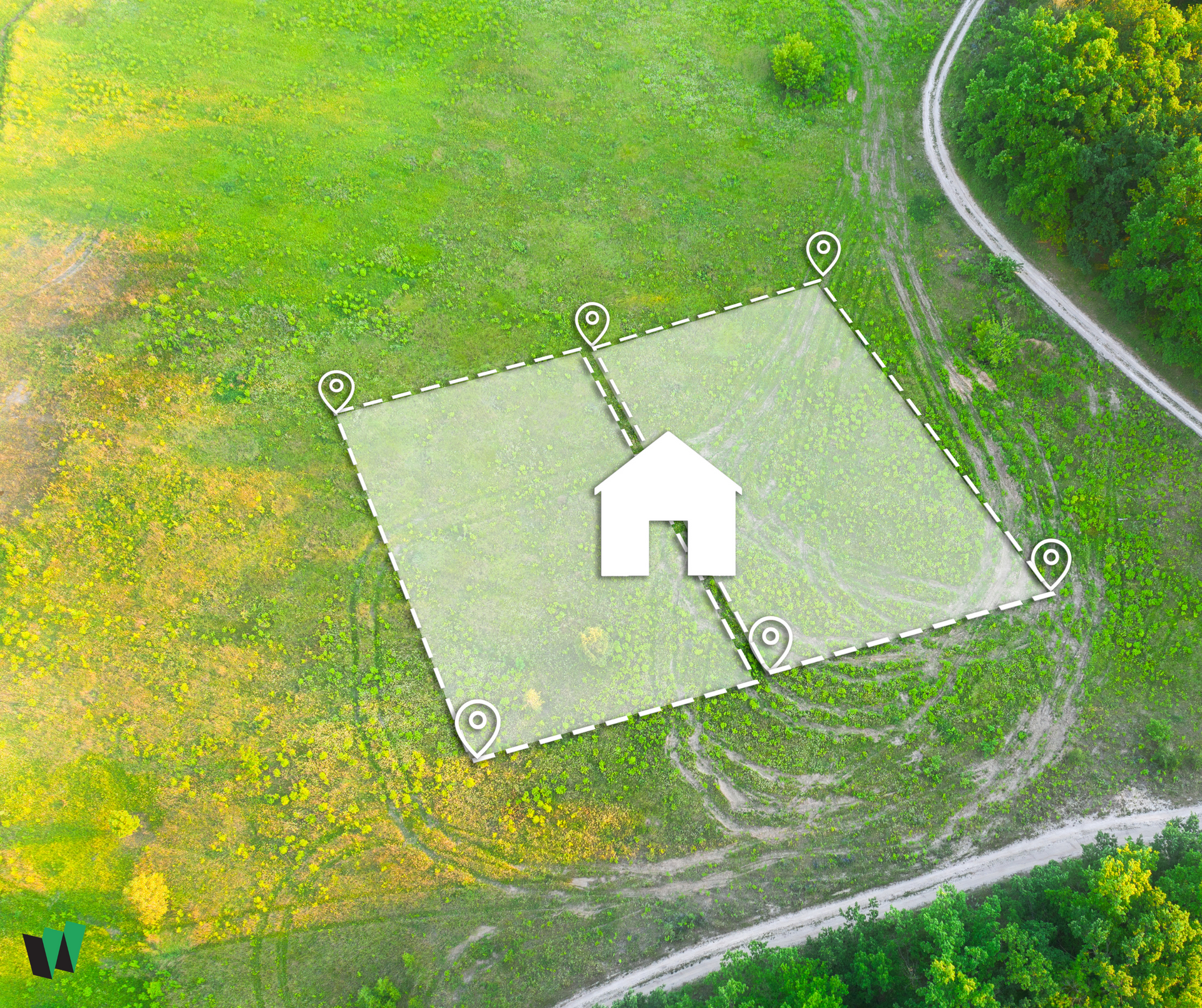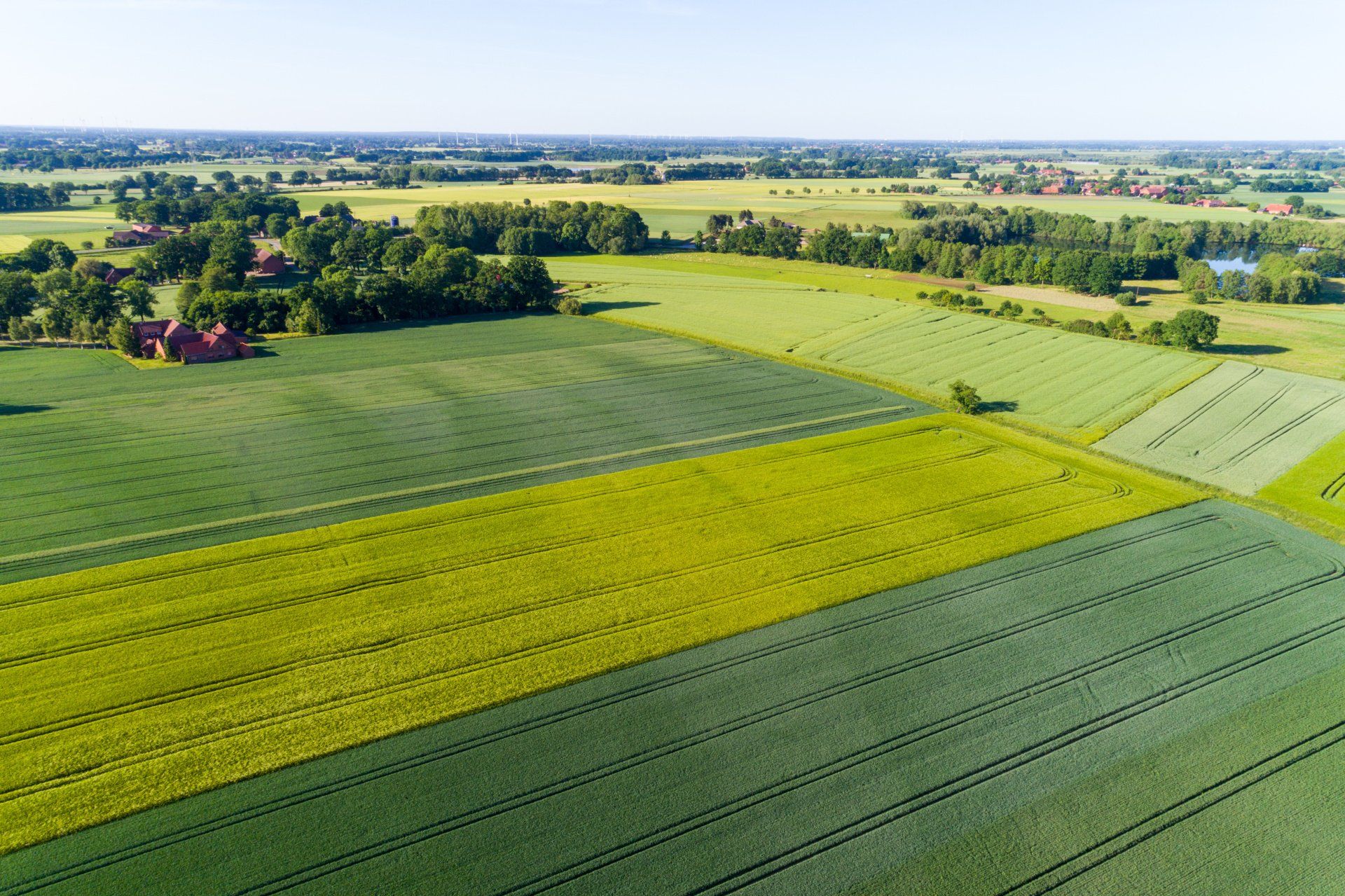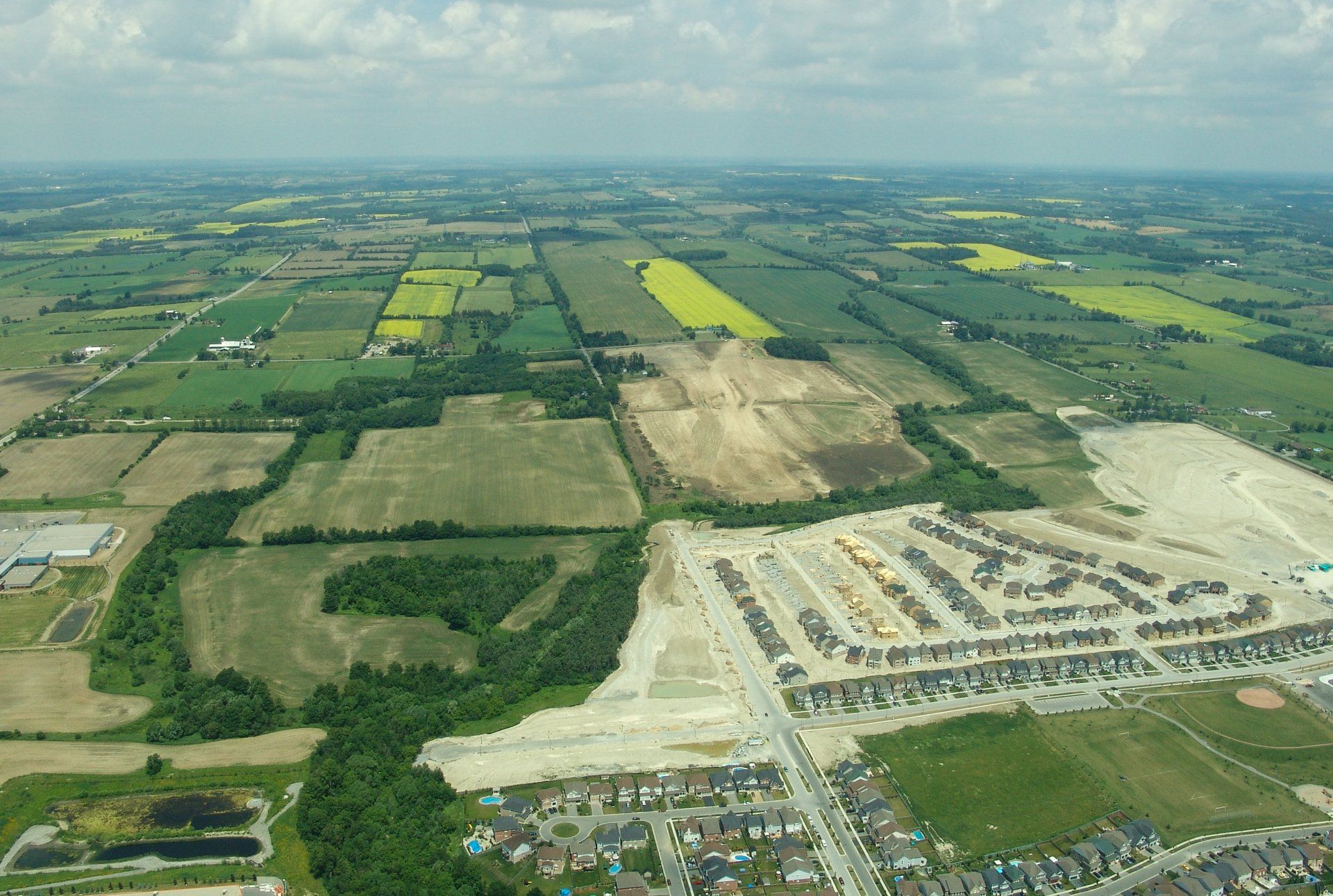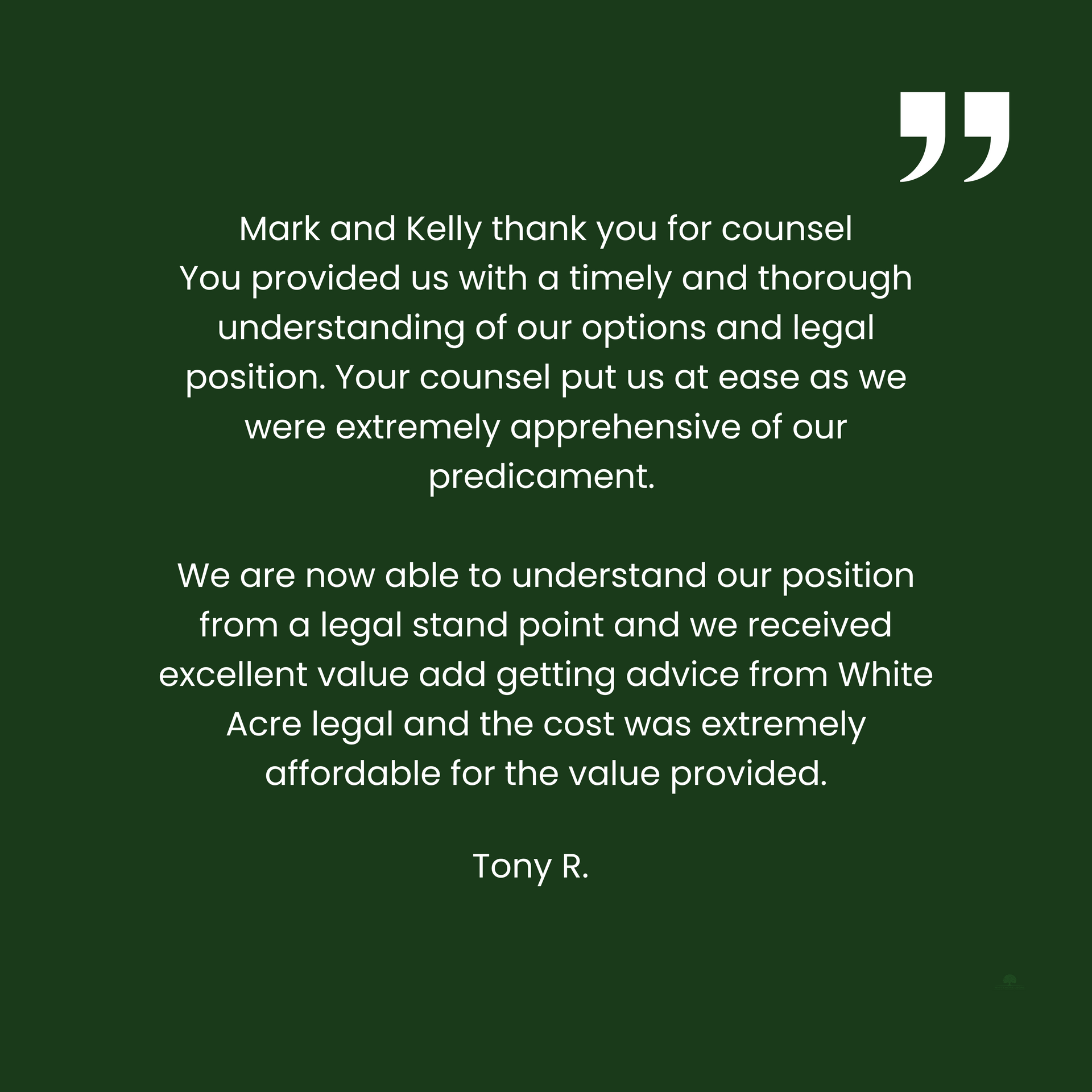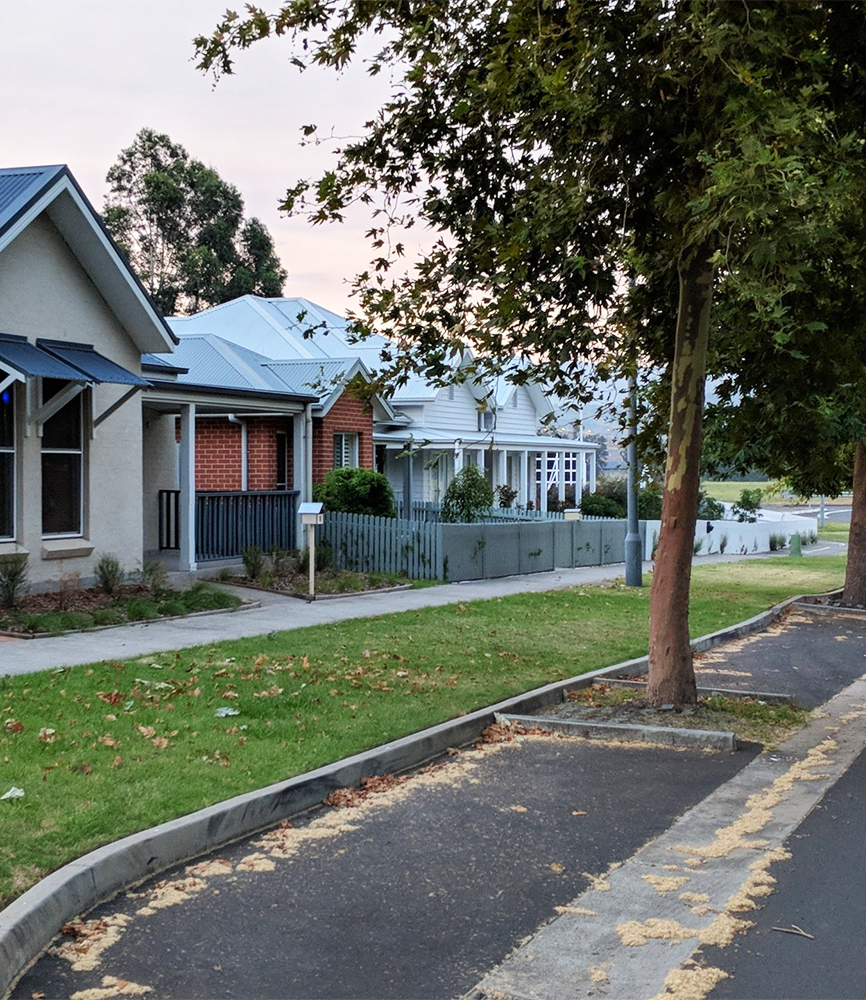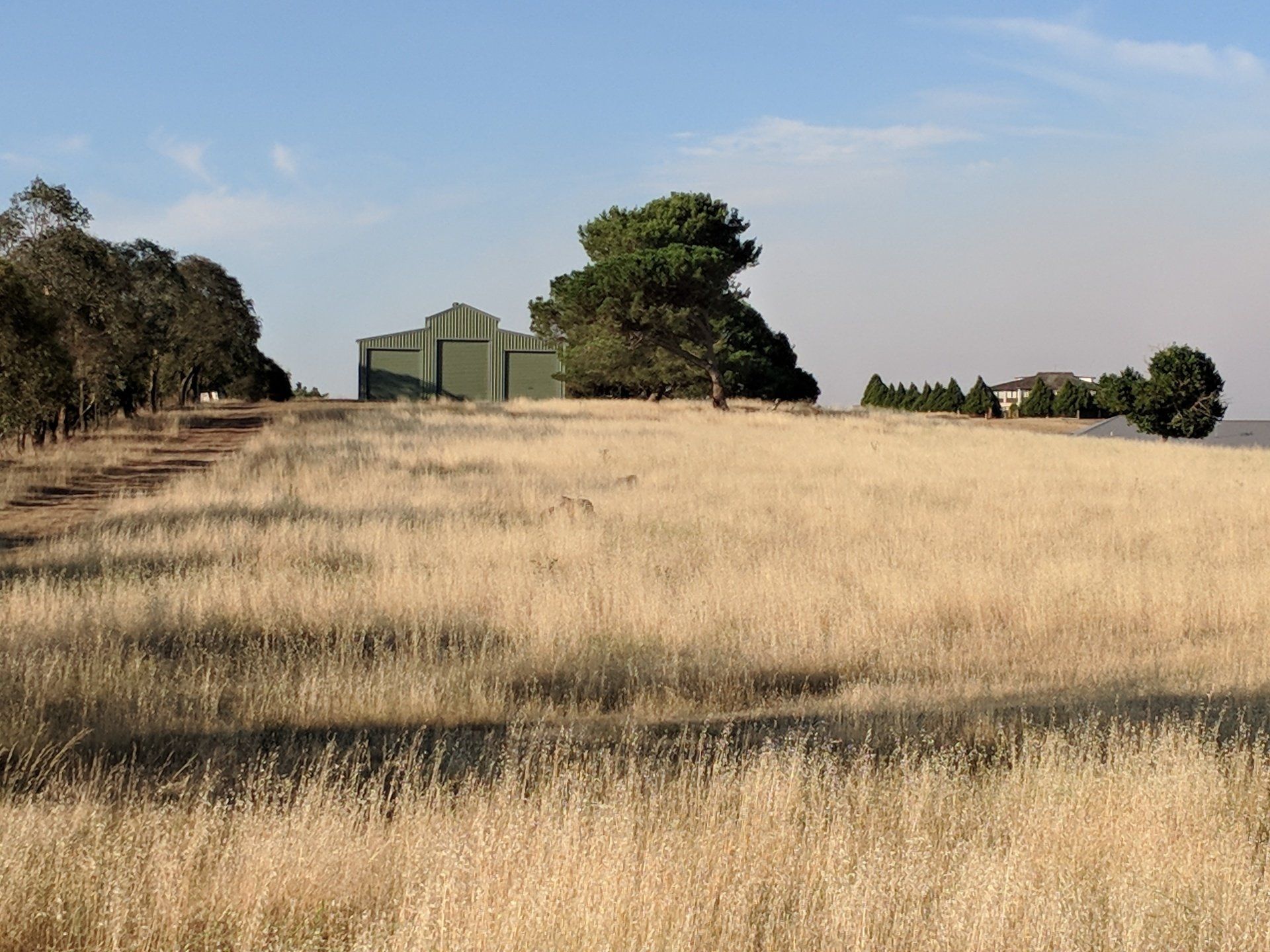By Mark Evans
•
June 20, 2024
“Development” as defined in in the Environmental Planning and Assessment Act 1979 ( EPA Act ), includes the erection of a “building”. So, unless exempt, erection of a building requires development consent. This raises the obvious question as to what constitutes a “building” for the purpose of the Act. Clearly a residential dwelling fits the bill but what about a tiny home propped up on piers? What about a shipping container or a chook shed? This article considers what may constitute a building for the purposes of the EPA Act and review case law in which various structures and buildings have been considered by the Court. Examples from case law There is substantive case law on what constitutes a “building” and what constitutes a structure or part of a structure and thus may also be caught by the expanded definition of building in the EPA Act. The EPA Act defines “building” and extends its ordinary meaning to include: part of a building, any structure or part of a structure (including any temporary structure or part of a temporary structure), but does not include a manufactured home, moveable dwelling or associated structure within the meaning of the Local Government Act 1993 . Some examples from historic cases below. A temporary marquee, erected for a New Years Eve fundraiser on a roof was held not to be a “building” or a temporary structure: Garbacz v Morton [2002] NSWLEC 17. A large demountable site office and a shipping container used for storage were both found to be buildings: Wyong Shire Council v Cohen [2004] NSWLEC 171. Four sheds on storage land have been found to be buildings: Jambrecina v Blacktown City Council [2009] NSWCA 228. Swing moorings emplaced upon the seabed were found not to be structures (and therefore not building): Royal Motor Yacht Club (Broken Bay) Pty Ltd v Northern Beaches Council [2017] NSWLEC 56. A slipway with a wooden cradle on which small boats could be brought from the river for servicing was held not to be sufficiently substantial to be a building: Tange v Drummoyne Municipal Council (1955) 20 LGR (NSW) 229 at 233. A gate preventing public access along a road constructed on the private land was held not to be a structure: Mulcahy v Blue Mountains City Council (1993) 81 LGERA 302 at 305-308. A battery of six fairground swing-boats installed on land which could be lifted by six men or dismantled in an hour was held not to be "in the nature of a building or erection which changed the physical character of the land at all": J ames v Brecon Country Council (1963) 15 P& CR 20 at 24. A large pontoon used as a landing pad for helicopters in the waterway of Pittwater was held to be a building. The pontoon was secured by chains at two points to concrete weights placed on the seabed: Aquatic Airways Pty Ltd v Warringah Shire Council (1990) 71 LGRA 10 at 19. Case law Garbacz v Morton [2000] NSWLEC 17 In Garbacz v Morton the NSW Land and Environment Court was asked to consider whether a temporary marquee erected on the flat roof of a dwelling for a New Year’s Eve function was a “building”. Neighbours commenced proceedings seeking removal of the marquee and one of the bases of the action was that the marquee was a building. The marquee in question was 15 metres long, 12 metres wide and 5 metres high. It was held down by weights, not fixed to the rooftop. Sheahan J concluded at paragraphs [45]-[54]: “[45] If the marquee is at law a ‘building’, cl 29 will be activated and a development consent will be required. [46] If the marquee is at law a ‘temporary structure’, it will require an approval from Council under s.68 of the Local Government Act 1993 as amended. [47] The applicants suggest it can be either or both, and thus illegal, through having neither development consent nor Council approval. [48] Time does not permit the complete rehearsal of what appears in the respective written submissions of the parties, but as Gibbs CJ said in Lizzio (at 117) these are indeed questions ‘of fact and degree’… [50] This marquee has none of the features of a fixture. It is entirely portable, and is designed to be moved from place to place for short periods and/or specific events. The public interest does not suggest, let alone dictate, that any, let alone every, erection, movement or demolition of it should be the subject of a specific Council approval. The Local Government Act definition of ‘building’ excludes a ‘moveable dwelling or associated structure’, and this marquee would seem to me to be a lesser beast than those… [52] The definition of ‘temporary structure’ includes ‘booth, tent or other temporary enclosure’, but Councils do not, as Mr Conti points out, require approval processes for tents, dog kennels, garden tool sheds, and the like. I acknowledge that this marquee is of substantial size, but in the absence of evident legislative intent to embrace such items I will not draw such an ad hoc distinction. [53] While I concede that a case could be mounted for some regulation of movable function facilities and hire company operators, particularly on questions of soundness, safety, and emergency escape, singling out one New Year’s Eve marquee, on a private property, in a planning case, does not appear to me to be the way to approach it, nor an appropriate law-making role for the court to take, irrespective of what regime may be in place for such regulation when the transition period is over.” Sheahan J concluded that the marquee was not a building or a temporary structure and thus did not require development consent or an approval from Council. One of the reasons was that Sheahan J felt that the regulation of moveable function facilities and structures was a matter better left to the Parliament to regulate in the form of legislation, not by the judiciary through a single decision in planning case. Wyong Shire Council v Cohen and Anor [2004] NSWLEC 171 In this case the NSW Land and Environment Court held that a large demountable site office and a shipping container used for storage both constituted buildings and thus required development consent. In Cohen the definition of “building” differed slightly from its current definition but not in a material way. This case also provided helpful insight into the distinction between temporary structures and moveable structures and the requirement for approval under s 68 of the Local Government Act in contrast to development consent under the EPA Act. In Cohen the local council brought proceedings against the landowners for carrying out development without consent by the erection of a building on the land. The first structure in Cohen was a large demountable site office. The office was of metal construction with a metal roof, 7.2 metres long by 4.8 metres wide. The office contained equipment which was used for the purpose of the landowner’s business. The office was erected upon concrete blockwork piers and connected to electricity but not to a water supply. The second structure was a shipping container. The container was used to store both domestic and household goods, tax records and other financial data. Cowdroy J held at paragraphs [19]-[26]: [19] Turning to the metal clad office structure, the Court has little difficulty in determining that such is a “building” as defined in s 4(1) of the EP&A Act. It has been submitted by Mr Cohen that the building is movable, that it is not connected to the ground and that therefore it should be regarded as within the exemption contained in the definition of “building”. However, it is apparent from the evidence, including the photographs that the office constitutes a building as defined in s 4(1) of the EP&A Act. It is connected to electricity. There is no suggestion that it is readily moveable as if it were a structure placed on wheels. The office is connected to the telephone. It relies for its support upon piers set into the ground, and is neither a “home” nor a “moveable dwelling” or part thereof. [20] Because of its construction the shipping container raises different issues. It has metal sides and a metal roof and is built of steel components. When the Court is required to categorise such items, the Court is satisfied that the approach of Mahoney JA in Mulcahy v Blue Mountains City Council (1993) 81 LGERA 302 at 305-308 is correct. [21] The Court must take notice of the purpose of the Act. The purpose of the EP&A Act as was considered by Sheahan J in Conomos v Chryssochoides (1997) 97 LGERA 113, especially at p 120. In that decision His Honour determined that pipes were relevantly a “structure” and were therefore a building as defined in the Act. [22] Mr Cohen submitted that the container comprised a temporary structure within the meaning of the LG Act and that it was mobile. There is nothing which would enable the Court to find that it was readily movable. It was not fitted with wheels, it could not be readily moved and for that reason the Court considers that the exemptions provided in subsections (a) and (b) of the term “building” contained within s 4(1) of the EP&A Act have no application. [23] Mr Cohen relied upon the decision of Sheahan J in Garbacz and ors v Morton and Anor 40225 of 1999 , otherwise entitled [2000] NSWLEC 17 in which the Court found that a marquee was not a building. When the facts of that decision are considered it is apparent that the structure in question was of an entirely different nature to the container or the office. His Honour held that a marquee was one which could be readily dismantled and re-erected frequently, and adopted the purposive approach to construction of the definition to determine that the marquee did not qualify as a “building”. That is an entirely different factual situation. …. [25] In this case the container comprises a structure as that term is considered in R v Lowe (1954) 19 LGR (NSW) 345 at 351. Accordingly, it is a “structure” in the definition of “building” contained in s 4(1) of the EP&A Act. [26] It follows that pursuant to s 76A(1) of the EP&A Act the respondents were obliged to obtain development consent for both the office building and for the container. In the absence of development consent pursuant to the provisions of the EP&A Act the council has established its entitlement to relief. The landowners appealed the decision of Cowdroy J in the first instance to the NSW Court of Appeal in Cohen v Wyong Shire Council [2005] NSWCA 46, but the only live issue in that appeal was the matter of costs of the original proceedings. However, in the Court of Appeal judgement, Hodgson JA (with whom Handley JA and Santow JA concurred) held: [26] In my opinion, the demountable office is without question a building, even though it is only resting on the ground. The error by the primary judge, in referring to piers set into the ground, was immaterial; and his reasons on this aspect of the case are otherwise correct. [27] As noted above, s.4(2)(b) of the EPA Act provides that a reference in the Act to “the erection of a building” includes a reference to “the placing … of a building on land”. Accordingly, if each of these items was a building, there was in each case the erection of a building. [28] The question whether the container was a building is less clear. However, by reason of its size, use and placement, it was in my opinion clearly open to the primary judge to find that, in the circumstances, it was a structure and therefore a building; and no error is disclosed in his reasons. [29] As regards the exceptions in the definition of “building”, the only exception possibly applicable is the exception of “a temporary structure within the meaning of the Local Government Act 1993 ”. The relevant definition, set out above, is an inclusive definition; and so the items in question could be temporary structures within the meaning of the LG Act either by reason of the ordinary meaning of the words “temporary structure” or by falling within paragraph (a) or paragraph (b) of the definition. Paragraph (a) clearly has no application. [30] The question whether these items are “temporary structures” in the ordinary meaning of those words, or “mobile structures”, is to my mind not an easy one. The primary judge found that they were not fitted with wheels and were not readily moveable, and these findings are unexceptionable; but they are not conclusive. The question addressed by Taylor J in Quarries Limited v. Federal Commissioner of Taxation (1961) 106 CLR 310 was a different question, namely whether certain sleeping units were “plant”; but the comments he made, especially at 316, about these units, which were like the demountable office in this case in that they were moveable with the aid of a mobile crane and semi-trailer, suggest that he may well have considered them as temporary structures. [31] However, if these items were temporary structures within the meaning of the LG Act, so that consent was not required under the EPA Act, consent for their installation was required by s.68 of the LG Act and was not obtained. In circumstances where there is now no live issue about the orders for removal, in my opinion it is not necessary to determine which of these two Acts was breached, and it is preferable to leave determination of this difficult issue to a case where it is necessary to decide it. It is sufficient to say that one or other Act was breached, so that, subject to the question of discretion, the orders made below were justified. Key Takeaways Whether a structure is a moveable dwelling will be a matter of fact and circumstance and depend on the ability to readily move the structure. A large demountable site office connected to electricity and telephone will be a building, even though it is only resting on the ground. The size, use and placement of the structure will also be important in determining whether it is a building. In this case, the shipping container was distinguished from the marquee in Garbacz and ors v Morton (and these found to be a structure) because it was not readily moveable, on wheels and able to be readily dismounted and re-created frequently. However, the Court of Appeal left open the question whether the ability to move the structure on wheels or only by crane and semi-trailer was determinative of whether it was a building at [30]. The Court left this difficult question open to a more appropriate case to determine but found that (i) if it was a building development consent was required; alternatively (ii), if it was a temporary structure a s.68 approval was required. Jambrecina v Blacktown City Council [2009] NSWCA 228 In Jambrecina , the NSW Court of Appeal was asked to consider an appeal against Court orders for the removal of four sheds used for storage on land in a low density residential area. The sheds in question were approximately between 4.8m x 3m in size. The landowner appealed to the NSW Court of Appeal claiming that the sheds in question were not buildings. Held The Court of Appeal held that each of the four sheds was a “structure” for the purposes of the definition of “building” in s 4(1) of the EPA Act and was therefore a building. Sackville AJA (with whom Giles JA and Ipp JA concurred) held at paragraphs [41]-[46]: [41] One purpose of the EPA Act and of the LEP is to prevent the erection of three-dimensional objects on land that can interfere with the amenity of neighbouring lots. Thus the objects of the EPA Act include the proper management and development of natural and artificial resources for the purpose of promoting the social welfare of the community and a better environment (s 5). More specifically, the LEP provides (Part 2, cl 9(1)) that the objectives of Residential 2A zoning include: “(e) to allow people to carry out a reasonable range of activities from their homes, where such activities are not likely to adversely affect the living environment of neighbours.” [42] In an individual case, the interference with the amenity of neighbouring lots might occur, for example, because of the bulk, unsightliness or proposed use of the objects to be erected or used. The evidence before the primary Judge showed that each of the four sheds: was of a sufficient size, bulk and appearance to potentially have an adverse effect on the amenity of neighbouring lots; had been located on the property for a period of some two and a half years prior to the hearing; although apparently prefabricated, was sufficiently affixed to the land, by whatever means, to be capable of remaining there for an indefinite period; and was used by the appellant in connection with her occupation of the dwelling on the Property. [43] In view of this evidence, the primary Judge was correct to conclude that each of the four sheds was a “structure” for the purposes of the definition of “building” in s 4(1) of the EPA Act. The sheds individually and collectively were potentially capable of adversely affecting the amenity of neighbouring lots. Each shed was therefore a “building” unless one of the exceptions stated in paragraph (a) of the definition applied. [44] The relevant exceptions in paragraph (a) are “a manufactured home, a moveable dwelling or associated structure”. The evidence did not support a finding that any of the sheds were a “portable device … used for human habitation” and thus did not support a conclusion that any of the sheds was a “moveable dwelling”. There was no suggestion that either the appellant or her son lived in the sheds or, indeed, that the sheds were capable of being used as a place of abode or dwelling. In any event, while the sheds were apparently prefabricated and presumably capable of being dismantled and reassembled, they were not “portable” in the same sense as tents, caravans and vans, which are specifically designed to be readily and frequently moved from place to place. [45] None of the sheds was a self-contained dwelling and therefore was not a “manufactured home”, as defined in the Local Government Act. Nor were any of the sheds an “associated structure”, since they were not designed to enhance the amenity of a moveable dwelling. [46] It follows that the primary Judge correctly concluded that none of the exceptions specified in paragraph (a) of the definition of “building” applied in this case and that the placement of the sheds on the Property constituted the “erection of a building” within the meaning of the EPA Act. Key Takeaways In Jambrecina the Court of Appeal first had regard to the objects of the EPA Act and the LEP in its analysis of whether the sheds were in fact buildings. At [41]-[43], the Court took into account the impact of the structures in question on the amenity of the neighbourhood and applied a purposive approach to the interpretation of the meaning of “structure”. Further, the Court had regard to the size, bulk and appearance of the sheds, the length of time they were in place on the land and the degree to which they were affixed to the land to find that the sheds were “structures” and therefore fell within the definition of a “building”. Because the sheds did not fall into either category of a moveable dwelling or a manufactured home, they were found to be “structures” and therefore buildings which required development consent. Royal Motor Yacht Club (Broken Bay) Pty Ltd v Northern Beaches Council [2017] NSWLEC 56 In Royal Motor Yacht Club , a question arose as to whether mooring apparatus laid on the seabed were “structures” and therefore fell within the definition of a building requiring development consent. Preston CJ held that a mooring apparatus was not a structure and its emplacement on the seabed could not be said to involve the erection of a building. The Council submitted the nature of a swing mooring was aptly described as consisting of a number of interconnected physical elements or parts comprising a heavy weight placed on the seabed, a chain, a rope and a buoy. The Council submitted that a swing mooring was, therefore, a “structure” in the ordinary meaning of that term and therefore fell within the definition of building which required development consent. At the time the swing moorings were installed, “building” was defined under the Warringah Planning Scheme Ordinance 1963 ( WPSO 1963 ) to include “any structure or any part thereof”. The term “structure” was not defined in WPSO 1963 or LGA 1919. The Council submitted that, although it appears that swing moorings may move with the tide and currents in certain circumstances, it was erroneous to contend that this made the swing moorings “portable” and akin to the portable marquee in Garbacz v Morton (1999) 108 LGERA 251; [2000] NSWLEC 17, which was held not to be a structure. It is plain that the weight of the elements of the mooring structure is designed to prevent or minimise movement while the marquee in Garbacz was to be removed following the event; it was not to be relocated to another part of the premises. The Council submitted that the swing moorings were structures and, accordingly, the erection and use of the swing moorings without obtaining consent was unlawful. Held Preston CJ held that the installation of the swing moorings in the waterway did not involve the erection of a building, including a structure. Preston CJ held at paragraphs [152]-[169]: [152] I find that the installation of the swing moorings in the waterway did not involve the erection of a building, including a structure, on land below high water mark. [153] First, I find that a swing mooring was not a building, including a structure, to which cl 59 of WPSO 1963 applied. It is true that in a wide sense a structure can refer to a “framework of material parts put together” or “something…built up of component parts”: R v Lowe (1954) 19 LGR (NSW) 348 at 351. However, courts have construed the concepts of “building” and “structure”, for local government and planning purposes, as involving, first, a structure of considerable size or substance, and second, a structure intended to be permanent or at least endure for a considerable time. In an early English case involving the Metropolitan Building Act 1955 (UK), Byles J in Stevens v Gourley (1859) 7 CBNS 99 at 112-113; 141 ER 752 at 757-758 said that: “by a ‘building’ is usually understood a structure of considerable size, and intended to be permanent or at least to endure for a considerable time. A church, whether constructed of iron or wood, undoubtedly is a building. So a ‘cowhouse’ or ‘stable’ has been held to be a building…On the other hand it is equally clear that a bird-cage is not a building: neither is a wig-box, or a dog-kennel or a hen-coup – the very value of these things being their portability.” [154] In Australian Gaslight Co v Valuer-General (1940) 14 LGR (NSW) 149, Jordan CJ at 156-157 and Halse Rogers J at 166 approved the definition of “structure” given by Roper J of the Land and Valuation Court at first instance as: “a substantial erection necessarily constructed in situ and forming and intended to form a permanent feature of the land, having substantially the characteristics of a building or of a permanent framework affixed to the land and not being a machine”. Davidson J at 162-163 preferred the definition of Scrutton J in Inland Revenue Commissioners v Smyth [1914] 3 KB 406 at 421 that: “a ‘structure’ is something artificially erected, constructed, or put together, of a certain degree of size or permanence, which is still maintained as an artificial erection, or which, though not so maintained, has not become indistinguishable in bounds from the earth surrounding”. [155] In O’Brien v Shire of Rosedale (1968) 22 LGRA 262 at 267, Gillard J identified characteristics commonly associated with a structure. The first characteristic was that: “the structure is something which is constructed, involving the notion of bringing together a number of distinct and separate physical components which, when constructed or brought together, form or make some other substantial object at a fixed site and having some utility value”. The second characteristic was that: “the mere fact that the new physical object so constructed rested by its own weight on the soil did not necessarily and of itself alter its character as a structure”. The third qualified the first two characteristics: “there must, however, be an intention on the part of the builder at the time of the erection that the new object brought into existence will remain permanently on its site on a permanent foundation…Thus a tent erected on a wooden floor or a caravan, if placed on a site temporarily for occupation, would not ordinarily be called a structure.” [156] These criteria that the structure needs to be of some considerable size or substance and to be sufficiently affixed to the land and to remain permanently or indefinitely on the land explain most of the cases holding a structure either to be or not to be a “structure”. [157] As to the first criteria that the structure needs to be of some considerable size or substance, small structures have been held not to be buildings, including structures: see the small structures referenced in Stevens v Gourley quoted above and in Noarlunga City Corporation v Fraser (1986) 61 LGRA 324 at 331-332 and in Mulcahy v Blue Mountains City Council at 306, 308. Hence, a slipway with a wooden cradle on which small boats could be brought from the river for servicing was held not to be sufficiently substantial to be a “building”: Tange v Drummoyne Municipal Council (1955) 20 LGR (NSW) 229 at 233. A gate erected on private land preventing public access along a road constructed on the private land was held not to be a structure: Mulcahy v Blue Mountains City Council at 305-308. [158] The decision in Holster v Director-General of National Parks and Wildlife Service that the swing moorings in that case were structures that could be removed under s 160A of the National Parks and Wildlife Act 1974 is distinguishable. It concerned different legislation and the finding in [16] lacked detailed reasons and did not address the arguments raised in the present case. [159] As to the second criteria, structures that are sufficiently affixed to the land, by whatever means, to be capable of remaining there for an indefinite period have been held to be “structures”. Hence, caravans or mobile homes that are placed on the land in such a way that they will remain where they stand indefinitely have been held to be structures. This might involve halting their mobility, such as by the wheels resting in excavations or placing supports under the structures, and connecting the structures to utility services such as electricity supply mains or water and drainage systems: see, for example, Wagga Wagga Municipal Council v Sullivan (1931) 10 LGR (NSW) 77 at 78; Parramatta Municipal Council v Chamberlain (1938) 14 LGR (NSW) 21 at 24; Forster v Shire of Mornington [1949] VLR 150 at 153; Crease v Hay Shire Council (No 2) (1973) 28 LGRA 38 at 39-40; Skaventzos v Vander-Lee (1974) 30 LGRA 395 at 399; and Waratah-Wynyard Council v Fairbrother [1994] TASSC 185 at [15], [16]. Similarly, sheds of a sufficient size and bulk, although prefabricated, that were sufficiently affixed to the land, by whatever means, to be capable of remaining there for an indefinite period were held to be “structures” and “buildings”: Jambrecina v Blacktown City Council [2009] NSWCA 228 at [42]- [43]. In these situations, there is a sufficient degree of affixation to the land and permanence of the structures to satisfy the ordinary meaning of a structure and a building. [160] However, other structures that were mobile and not intended to remain permanently on the land on which they were placed have been held not to be structures: see, for example, Lismore Municipal Council v Williams (1931) 10 LGR (NSW) 58 at 60 (moveable fruit stall on wheels); Ex parte Hunter; re Doig (1934) 12 LGR (NSW) 38 at 39, 40 (moveable galvanised iron amusement tank); Noarlunga City Corporation v Fraser at 331, 337 (a yacht on a moveable cradle with wheels); Garbacz v Morton at [50] (a portable, temporary marquee). [161] I find that the swing moorings installed by RMYC in the waterway were not structures and hence not buildings to which cl 59 of WPSO 1963 applied. The swing moorings did not satisfy the two criteria of being of some considerable size or substance and sufficiently affixed to the land and remaining permanently or indefinitely on the land. The swing moorings were not of a sufficient size or bulk to be a structure for the purpose of the regulation of the erection of buildings on land under cl 59 of WPSO 1963. Swing moorings were not affixed to the land below the waterway, by any means, and did not remain indefinitely at the locations where they had been placed from time to time. The swing moorings were simply placed on the seabed and remained in that general location by reason of the weight of the mooring block. However, the swing moorings did move with the tide and the wind. The swing moorings were deliberately moved from time to time to accommodate different sized vessels or to clear a passage for boating activities. The swing moorings were also removed and replaced for maintenance purposes. [162] Second, the placement of the swing moorings in the waterway did not involve the “erection” of a structure. A building, including a structure, must be capable of erection. Clause 59 of WPSO 1963 provided that a building was not to be “erected” on any land below high-water mark. [163] The ordinary meaning of “to erect” is “to raise, set upright, build”: Kismet Engineering Pty Ltd v Brisbane City Council [1959] 102 CLR 574 at 582. The word has this ordinary meaning in WPSO 1963. [164] The concept of erecting a structure on land involves the raising, setting upright or building of the structure on the land. It involves putting a new structure on the land. Hence, to move a structure already on the land from one part of it to another is not to erect it upon the land. It does not put a new thing there; it moves an old thing from one position to another on the same land: Kismet Engineering Pty Ltd v Brisbane City Council at 580, 582. [165] Third, the swing moorings were not structures that were erected “on any land below high-water mark”. Clause 59 of WPSO 1963 required that the erection of the building take place on the land below high-water mark. This required affixing the building, including a structure, to the land below high-water mark in some substantial way so that it was capable of remaining there for an indefinite period. A structure that merely physically rests on land has not been erected on the land. In some circumstances, a structure may be of such a considerable size and weight that it might be considered to be a structure on the land even though it is not affixed to the soil: see Noarlunga City Corporation v Fraser at 328. Ordinarily, however, a building will be considered to have been erected on the land by some affixation to the soil or by its sheer size and weight. [166] Hence, if a structure is erected at one place and is moved to another place, it will not have been erected at the other place, unless it is affixed in some substantial way to the land at the other place. In Strong v Taylor (1890) 16 VLR 202, the building regulation prohibited the “construction” of buildings made of combustible materials within a certain distance of the building line of the street. The defendant constructed a wooden office on wheels at a place not within the prohibited distance and, after it was constructed, wheeled it to a place within the prohibited distance. The Court held that the building had not been constructed within the place prohibited and there had been no breach of the regulation: at 204. In James v Brecon County Council (1963) 15 P & CR 20, the defendant installed a battery of six fairground swing-boats. The entire battery could be lifted and taken away by six men or it could be dismantled in about an hour. The Court held that the defendant had not erected a building (which was defined to include a structure) and the swing-boats were not “in the nature of a building or erection which changed the physical character of the land at all”: at 24. [167] However, it is a question of fact and degree whether there has been the erection of a building. In Aquatic Airways Pty Ltd v Warringah Shire Council at 19, the Court of Appeal held that a large pontoon used as a landing pad for helicopters in the waterway of Pittwater was a building (structure). The pontoon was secured by chains at two points to concrete weights placed on the bed of Pittwater and at a third point to a steel locomotive wheel which was also placed on the seabed. The Court held that “the placing of weights on the bed of Pittwater and the securing of those weights to a pontoon by means of chains amounts to the erection of a building”: at 19. The pontoon used as a landing pad for helicopters in that case was, however, of a considerably greater bulk and size than a swing mooring. Moreover, the Court did not address the question of relevance in the present case of whether that structure of the pontoon with its attached chains and large weights was erected “on any land below high-water mark.” In one sense, the only parts of that structure that were erected on the seabed were the three weights; the great bulk of the structure floated in the water above the land and was not held upright by the weights on the seabed. [168] The swing moorings in this case were not “erected…on any land below high-water mark” within cl 59 of WPSO 1963. The swing moorings were assembled onshore, that is to say, the component parts of the mooring block, chains, rope and buoy were assembled onshore. The assembled swing moorings were taken out into the waterway in a suitable vessel (such as a barge with a winch) and the mooring block of the swing mooring was lowered into the desired position on the seabed. There was no affixation of the mooring block to the seabed. No part of the swing mooring other than the mooring block was placed on the seabed; the floating buoy kept the chains and rope above the seabed. The mooring block on the seabed did not hold upright the chains, rope and buoy. The size and weight of the swing moorings were not so substantial that they could not readily be moved and they did not remain in the same position indefinitely. In the circumstances, there has not been an erection of the swing mooring on the land below high-water mark. Instead, there has been the movement of an already assembled apparatus from one place (the club’s land onshore) to another place (the position on the seabed where the mooring block of the swing mooring was placed). This did not involve the erection of a structure on the land below high-water mark. [169] For these reasons, any swing moorings that were installed by RMYC in the waterway after the coming into force of WPSO 1963 did not involve the erection of a building on any land below high-water mark in breach of cl 59 of WPSO 1963. Key Takeaways The courts over time have construed the concepts of “building” and “structure”, for local government and planning purposes, as involving, (i). a structure of considerable size or substance, (ii). being sufficiently affixed to the land; and (iii). a structure intended to be permanent or at least endure for a considerable time. A structure is something which is constructed, involving the notion of bringing together a number of distinct and separate physical components which, when constructed or brought together, form or make some other substantial object at a fixed site and having some utility value. The mere fact that the new physical object so constructed rested by its own weight on the soil does not necessarily and of itself alter its character as a structure. There must be a sufficient degree of affixation to the land and permanence of the structures to satisfy the ordinary meaning of a structure and a building. If a structure is erected at one place and moved to another place, it will not have been erected at the other place, unless it is affixed in substantial way to the land: at [166] Hakea Holdings Pty Ltd v Louisiana Properties Pty Ltd [2018] NSWCA 240 At first instance, Moore J applied Royal Motor Yacht Club and concluded that a road was a structure and therefore caught by the definition of a building in the EPA Act. On appeal to the NSW Court of Appeal one of the questions raised was whether a roadway following the natural lie of the land was a structure and therefore a “building”. Basten JA (with whom Meagher JA and Preston CJ of LEC agreed) held that although “building” is defined in the Act to “[include] any structure”, that definition must be construed in its statutory context. The Act contemplates a distinction between “buildings” and “works”, with the latter broader than the former, and further contemplates that buildings are “erected”. A roadway which follows the natural lie of the land would be “works” but is not a “building” for the purposes of the EPA Act. Held His Honour Basten JA held at paragraphs [86]-[92]: [86] The engagement of s 81A(2) depended upon the construction of the road satisfying the phrase “erection of a building”. The trial judge was satisfied that it did, noting the definition of “building” in s 4(1): 4 Definitions (1) In this Act, except in so far as the context or subject-matter otherwise indicates or requires: … building includes part of a building, and also includes any structure or part of a structure (including any temporary structure or part of a temporary structure), but does not include a manufactured home, moveable dwelling or associated structure or part of a manufactured home, moveable dwelling or associated structure. [87] As the judge accepted, the only basis upon which the road could satisfy the definition of “building” was if it were appropriately to be regarded as a “structure” for the purposes of the definition. The judge then referred to two authorities. The first, an unreported decision of Talbot J in the Land and Environment Court, Bowyer v Manly Council [1996] NSWLEC 141 held that relevantly identical terminology in the definition of “building” in the Local Government Act 1993 (NSW) did not encompass a road. The second was Royal Motor Yacht Club (Broken Bay) Pty Ltd v Northern Beaches Council [2017] NSWLEC 56 in which Preston CJ concluded that a swing mooring did not constitute a “structure”. [88] Before turning to the reasoning adopted by the trial judge in concluding that the road constituted a “building” for the purposes of s 81A, it should be noted that the judge was not making a generic analysis, but rather considering evidence as to the construction of this particular road. Thus he stated that “I am satisfied that a proper understanding of the matters explained by [Preston CJ] leads me to the conclusion that the road constructed by Caverstock, at Louisiana's [sic – Hakea’s?] instigation, is properly to be regarded as a ‘structure’ and, thus, properly encompassed within the definition of ‘building’ in s 4”. [87] Royal Motor Yacht Club involved similar language concerning the erection of a building, building being defined to include “any structure or any part thereof” for the purposes of cl 59 of the Warringah Planning Scheme Ordinance 1963 . The judgment of Preston CJ contains an extensive analysis of the case law dealing with various kinds of structures. The Chief Judge found particular assistance in the characteristics commonly associated with a structure identified by Gillard J in O’Brien v Shire of Rosedale [1969] VR 112 ; (1968) 22 LGRA 262. The trial judge applied a similar approach, which led him to the conclusion that the road was a “structure”. [90] There were problems with this approach. O’Brien involved the removal of river gravel from the plaintiff’s land for road making. There was a statutory power to enter the plaintiff’s land for that purpose, but not “within 50 yards of any bridge, dam, jetty or other structure”. In other words, the word “structure” had a freestanding quality and was not an element of the definition of a different term, namely “building”. [91] The trial judge distinguished Bowyer on the basis that Talbot J had been concerned with the separation of certain functions from the Local Government Act into the Roads Act 1993 (NSW) . The judge then identified two aspects of the definition of “structure” in the Macquarie Dictionary, but, after noting reservations about the use of dictionary definitions in the context of statutory construction, stated: “[57] For the present purposes, all I draw from these two elements of this dictionary definition is that there is a deal of breadth of its potential application, including dams which, in the broad, can include significant rock or earthworks’ dams and not merely behemoth dams, such as those at Warragamba or Cataract, retaining massive water volumes for human or industrial consumption.” [92] There are two factors which arise from this approach. First, unsurprisingly the dictionary definition included the defined term “building” within the concept of a “structure”. Arguably “structure” is a wider term than “building”; on that view, the question is the extent to which the reference to structure in the definition of building expands the concept of a building, not what the term structure in the abstract may encompass. Secondly, though perhaps inherent in the first point, that which is missing from dictionary definitions is the context in which the word is used in the statute. Not only is context provided by the primary unit for conveying meaning, namely the sentence, but also the place of the concept in question within the framework of the statute. Absent that broader context, it is not possible to adopt the purposive construction principle as required by s 33 of the Interpretation Act 1987 (NSW) . [93] In Mulcahy v Blue Mountains City Council (1993) 81 LGERA 302, this Court considered the lawfulness of Ms Mulcahy’s conduct in placing gates across a sealed road constructed, by mistake, on her land. The Council sought to compel her to remove the gates on the ground that they were “buildings” for which consent was required and had not been obtained. The appeal originally brought against the finding that the gates were buildings was abandoned. Nevertheless, in the course of dealing with the appropriateness of granting discretionary relief Mahoney JA expressed “considerable reservations” as to whether the gates were “buildings”. Mahoney JA continued: “It has, for example, been suggested that the definitions must be given their literal meanings and that, applied in this case, it follows that: a building may not be erected or altered without approval of the authority; ‘building’ includes ‘structure’; and accordingly a structure of any kind may not be erected or altered unless the Council’s approval has been formally sought and obtained. But, if the definitions be so construed, extraordinary results would follow which, it may confidently be said, the legislature would not have intended, much less espoused. If given their full and literal meaning, words such as ‘structure’ and ‘erect’ have a wide operation…. … It is in my opinion plain that the generality of the expressions used must be restricted if they are to perform the function which the legislature intended and to do so without extending to things which were never envisaged. The too literal construction of definitions of this kind would, in my opinion, be both unsatisfactory and wrong. … If read literally the administration of them would in practice be unworkable …. The better approach is, in my opinion, to determine what things or actions come within such terms by reference to the purposes which the provisions were enacted to achieve. This is, of course, a long recognised approach to the construction of statutes; more recently, it has been described as ‘purposive’. The construction of statutes in this way was referred to in detail in this Court by McHugh JA in Kingston v Keprose Pty Ltd (1987) 11 NSWLR 404 …. … In principle, the purposive approach to construction of, for example, ‘structure’ or ‘erect’ would proceed in a manner such as the following. The Court would determine the purposes which the legislature sought to achieve by prescribing that no structure may be erected without council approval. … It would not give to the terms a meaning which had no relevance to the achievement of that purpose.” [94] The function of a definition using the term “includes”, followed by a number of separate terms, may itself be ambiguous. Generally, such language cannot be construed as exhaustive; however the list may be (a) illustrative of the word defined; (b) intended to resolve uncertainty as to borderline cases, or (c) expansive of the ordinary meaning of the term defined. Use of the phrase “part of a building” may fit within the second category and indicates that no restrictive approach should be taken to the meaning of “building”. The reference to “any structure” following the words “also includes”, may have the same function. The fact that the term “structure”, in its ordinary meaning, is apt to include a building, but to have a wider connotation, may indicate that it is also intended to be expansionary. The question remains, how far is the defined term expanded? [95] The answer is to be derived from the statutory context. Thus, “building work” is defined in s 4(1) to mean “any physical activity involved in the erection of a building.” Many structures require construction, that is, the putting together of disparate parts, in circumstances where one would not speak of erection. Similarly, many things are built, but do not constitute buildings, despite the common linguistic root. Further, a critical concept in the Environmental Planning and Assessment Act is “development”. That concept underlies the system of regulation. Development is defined in s 4(1) as covering (a) the use of land, (b) the subdivision of land, (c) the erection of a building, (d) the carrying out of a work and (e) the demolition of a building or work. Although not entirely separate and independent concepts, these elements of the definition indicate conceptual distinctions. It is clear that “work” is a broader category than “building”. Thus s 4(2) provides: (2) A reference in this Act to: … (b) the erection of a building includes a reference to: (i) the rebuilding of, the making of alterations to, or the enlargement or extension of, a building, or (ii) the placing or relocating of a building on land, or (iii) enclosing a public place in connection with the construction of a building, or (iv) erecting an advertising structure over a public road, or (v) extending a balcony, awning, sunshade or similar structure or an essential service pipe beyond the alignment of a public road, and (c) the carrying out of a work includes a reference to: (i) the rebuilding of, the making of alterations to, or the enlargement or extension of, a work, or (ii) enclosing a public place in connection with the carrying out of a work, and (d) a work includes a reference to any physical activity in relation to land that is specified by a regulation to be a work for the purposes of this Act but does not include a reference to any activity that is specified by a regulation not to be a work for the purposes of this Act, and … [96] One of the regulatory controls imposed is the requirement for the issue of occupation certificates with respect to new or partly completed new buildings. Although the provision requires a certificate before a person can commence “occupation or use” of a new building, the concept of usage should be understood as related to occupation. [97] It is therefore relevant that one does not ordinarily speak of erecting a road or occupying a road except, in the latter case, perhaps, by protestors. On the other hand, one can envisage many structures which are erected which may not be described as a building in ordinary usage. Television towers and radio masts may be examples. A structure which is never described as having been “erected” does not fall within the concept of a building, even on an expansive view of that term. Importantly, unlike terms such as “development” and “work”, the Act demonstrates no intention to give “building” so expansive a denotation as to encompass all kinds of structures. The fact that something may stand above the natural level of the land (such as the gates in Mulcahy or the large piles of rock envisaged by Mahoney JA in Mulcahy ) suggests that such a characteristic is not sufficient to make the thing a structure. Nor would it matter that such an item had a level of permanence or was largely immovable. On the other hand, the construction of a roadway would readily constitute the carrying out of a work and thus a development. [98] Bearing all these considerations in mind, a roadway which follows the natural lie of the land (even with the occasional culvert) should not be identified as a “building” for the purposes of the Act. That is, of course, to say nothing about a raised freeway or other kinds of roadway. It follows that the road the subject of these proceedings did not fall within the requirements of s 81A(2) of the Environmental Planning and Assessment Act . Although the judge described his conclusion as involving “questions of fact and degree” the approach to the question of statutory construction was erroneous. Key Takeaways The dictionary meaning of “structure” is expansive, however the word must be interpreted having regard to the purpose of the EPA Act and the context in which the word appears in the definition of a building. The Act does not intend to broaden the definition of “building” to encompass all “structures”. To do so would take the ordinary meaning of building too far. Many things are “built” or “erected” that do not constitute a building, for example an antenna or a radio mast. Development in the EPA Act includes the erection of a building and the carrying out of a work. These classes may be conceptually different and the carrying out of a work is clearly a broader class than erection of a building. The erection of a building usually precedes occupation of a building. It is an unnatural stretch of language to refer to the erection of a road or the occupation of a road, particularly when the EPA Act also regulates the carrying out of works which is a more apt description. Ralph Lauren Pty Ltd v New South Wales Transitional Coastal Panel; Stewartville Pty Ltd v New South Wales Transitional Coastal Panel; Robert Watson v New South Wales Transitional Coastal Panel [2018] NSWLEC 207 In Ralph Lauren , Preston CJ held that the construction of a sea wall would be more aptly described as “works” under the EPA Act, rather than the erection of a “building”. In Ralph Lauren , three owners of coastal land at Byron Bay wished to repair failing sea walls on Belongil Beach in order to protect their properties from coastal hazards. The owners applied for development consent and appealed the deemed refusal of their development applications to the NSW Land and Environment Court. The NSW Transitional Coastal Panel (consent authority) submitted that approval of the sea walls would formalise uncoordinated and piecemeal responses to coastal erosion processes operating at Belongil Beach, regularise unlawful works located largely on public land for the protection of private property, and confer a valuable private benefit at the expense of the public. In the course of the proceedings, Preston CJ was asked to consider (a minor ancillary question) whether the construction of a sea wall, more specifically, the stacking and restacking of rocks and placement of earth and other material may be considered a structure or a building for the purposes of the EPA Act. His Honour Preston CJ concluded that this type of development was more appropriately considered works and not the erection of a building at [41]: “stacking and restacking of rocks and the placement and replacement of earth and other material to form the walls on Belongil Beach may not involve the erection of a building within the meaning of those terms in the EPA Act : see Hakea Holdings Pty Ltd v Louisiana Properties Pty Ltd [2018] NSWCA 240 at [97] , [98] and [137] . These physical activities would, however, involve the carrying out of a work, as would the enclosure by way of a safety fence of part of the public beach in connection with carrying out the works.” Ballina Shire Council v Joblin [2022] NSWLEC 90 In Joblin , Robson J applied Royal Motor Yacht Club and found that an in-ground swimming pool was a building but in the different context of a development control order. In Joblin , the Council sought demolition and removal of the swimming pool on the basis that it was a danger to the public and was so dilapidated that it was prejudicial to the neighbourhood. Ultimately, the landowner failed to comply with Council orders and was charged with an offence of the EPA Act of failing to comply with a development control order given by Council. The landowner submitted that the Council had no power to make the order, because the in-ground swimming pool was not a “building” and that adopting the Council’s construction of “building” would be inconsistent with the Court of Appeal decision in Hakea . The Council submitted that while the Court of Appeal in Hakea appeared to suggest that a structure that was never ‘erected’ does not fall within the concept of a “building”, the Court also stated that the terms “building” and “structure” are not to be interpreted restrictively and must take into account the statutory context in which the term is used (at [95] per Basten JA). Further, where “building” has an “expansive meaning” under s 1.4 of the EPA Act , a swimming pool is not a moveable dwelling (or an associated structure under the Local Government Act 1993 (NSW) ), and where s 3 of the Swimming Pools Act provides that a “swimming pool” means “an excavation, structure, or vessel”, the subject pool is clearly regarded as a structure within the definition provided in the EPA Act and within the context of the Order. Held His Honour Robson J at [49] held that the swimming pool was a building and/or a structure which fit plainly within the definition of “building”. Robson J held at paragraphs [50]-[62]: [50] However, although it is clear that “structure” is a wider term than “building”, the question is whether the reference to “structure” in the definition of “building” expands the concept of a “building” to the extent it includes the swimming pool structure. This question has been directly and indirectly considered in various authorities. [51] In Royal Motor Yacht Club (Broken Bay) Pty Ltd v Northern Beaches Council [2017] NSWLEC 56 (‘Royal Motor Yacht Club’), Preston J , determining whether swing moorings constituted a “building” or moreover a structure (in circumstances where the definition of “building” within cl 59 of the Warringah Planning Scheme Ordinance 1963 included “any structure or part thereof”), considered that three criteria were relevant, first, the structure must be of some considerable size or substance; second, the structure must be sufficiently affixed to land; and third, the structure must remain permanently or indefinitely on the land. [52] Although not determinative in my overall findings, adopting these criteria, I find that the swimming pool is plainly a ‘structure’ in that it is (as can be seen from the photos in evidence), first, of a considerable size and substance in that it involved substantial excavation and associated building or works; second, it is affixed to and recessed in the land; and, third, it is a structure which will, in a relative sense, remain indefinitely on the land by virtue, at least, of its beneficial addition to the amenities of the land, its design and construction. [53] In Mulcahy v Blue Mountains City Council (1993) 81 LGERA 302, the Court of Appeal was considering whether gates on a property were “buildings” for which development consent was required and had not been obtained, and Mahoney JA, having expressed reservations as to whether gates were buildings, cautioned, that although the definition of “building” (in that matter) included “any structure or part thereof”, it could not be said that a structure of any kind may not be erected or altered without Council approval and, stated at 306-308 : It is in my opinion plain that the generality of the expressions used must be restricted if they are to perform the function which the legislature intended and to do so without extending to things which were never envisaged. The too literal construction of definitions of this kind would, in my opinion, be both unsatisfactory and wrong. … If read literally the administration of them would in practice be unworkable … The better approach is, in my opinion, to determine what things or actions come within such terms by reference to the purposes which the provisions were enacted to achieve. This is, of course, a long recognised approach to the construction of statutes; more recently, it has been described as ‘purposive’. … In principle, the purposive approach to construction of, for example, ‘structure’ or ‘erect’ would proceed in a manner such as the following. The Court would determine the purposes which the legislature sought to achieve by prescribing that no structure may be erected without council approval. … It would not give to the terms a meaning which had no relevance to the achievement of that purpose.” [54] His Honour’s words were noted by Basten JA in Hakea at [93] , who accepted that whilst the term “structure” included a building when given its ordinary meaning, how far “structure” could be further expanded was to be derived from the statutory context. His Honour considered the concept of “development” (which itself was defined in s 5(1) (now s 1.5(1)(c)) to include “the erection of a building”), being a critical concept in the EPA Act which underlies the system of regulation, and found, in the circumstances of that case, that a structure cannot be described as a “building” within s 4(1) (now s 1.4(1)) of the EPA Act unless it can be said to have been “erected”; and the fact that something may stand above the natural level of the land at a level of permanence, or is largely immovable, is not “sufficient” to make that thing a structure (and therefore a building). [55] Although the defendant relied upon Hakea, I do not consider that it provides support for the defendant’s position because although Basten JA (with whom Meagher JA and Preston CJ of LEC agreed) found (at [97]-[98]) that a road constructed over adjacent land could not be identified as a “building” because, in the circumstances, it had not been “erected”, that case did not concern a development control order issued under Sch 5 of the EPA Act , and the reasoning (of Basten JA at [92]) emphasised that the context of words within the relevant statute (and I interpolate a particular part of a statute) is necessary in order to adopt a purposive construction. [56] Given the above judicial commentary, even if it is too simplistic to suggest that the pool is a “structure” and therefore is literally caught in the definition of “building”, seen in the context provided by Sch 5 and the purposes for which the provisions were enacted to achieve ( Mulcahy at 306-308 ), I consider it appropriate to adopt a purposive construction based upon text, context and purpose as required by s 33 of the Interpretation Act 1987 (NSW ) (‘ Interpretation Act ’) (considered further at [58] below). [57] Although the defendant submits that Thiele (notwithstanding that it concerned Commonwealth legislation) remains relevant to the interpretation of “building” within the EPA Act because Hill J, in accordance with the ordinary meaning of the word ‘building’, found that every building is a structure but not every structure is a building, I do not consider Thiele to be applicable to the present circumstances where the Court was concerned with whether installing a swimming pool which had been recommended for hydrotherapy treatment of injuries was compensable under the Compensation (Commonwealth Government Employees) Act 1971 (Cth) and found (at 350) that the swimming pool could not be considered to be a “building” when adopting “ordinary usage” of the word, and where, as considered below, I find that a purposive interpretation of “building” is preferrable to its ordinary meaning in the present circumstances. [58] As such, I consider that in construing “building”, a meaning which accords with the purpose the legislature intended the provision to achieve, even if that approach may trump an “ordinary” interpretation of the words, is to be preferred (for example, Lawson v Minister for Environment & Water (SA) [2021] NSWCA 6; (2021) 246 LGERA 421 at [25] (Bathurst CJ)) conscious of planning law’s concern for matters such as safety and stability of structures ( Royal Motor Yacht Club at [149] ); and I consider that the word ‘building’ within Order 3 (and within Sch 5) must be interpreted within the context in which it is used, which exposes the purpose to which it is directed ( Sydney Seaplanes Pty Ltd v Page (2021) 106 NSWLR 1; [2021] NSWCA 204 (‘Sydney Seaplanes’) at [31] ). I find that it is consistent with the text, context and purpose to find that the term “building” in Order 3 is not confined to buildings and structures “erected” (in the sense of erected above-ground) and its purpose is to provide for the regulation of the safe and orderly use of land such that the term “building” in this context would be given a meaning that includes, in the present circumstances, the swimming pool. …. [60] It follows from the above that I agree with Council’s position that interpretation should proceed by construing the meaning of “building” in its statutory context, and not interpreting ‘building’ and ‘structure’ restrictively, with the effect that I do not accept the defendant’s submissions (noted at [26] above) that the definitions of “building work” and “development” (which contain “erection of a building”) are of assistance in the construction task. …. [62] Before turning to my consideration of the defendant’s second contention, despite my findings above, I disagree with Council’s submission that the pool is a building simply because it is immoveable. While a structure may be identified (pursuant to Preston J’s criteria in Royal Motor Yacht Club ) if it satisfies three criteria, including that it is permanent or immovable, those characteristics alone (as explained in Hakea at [97] ) are not sufficient to make the pool a ‘structure’ (let alone a ‘building’), and I consider that this view is supported by the fact that the definition of “building” within s 1.4(1) of the EPA Act includes temporary structures. Key takeaways Joblin concerned a development control order issued under the Local Government Act and Robson J held that the term “building” in the order was not confined to buildings and structures “erected” on the land. The purpose of the order was to provide for the safe use of land such that the term building in that context should be given a meaning that included the swimming pool and did not require that the swimming pool be “erected” on the land. Accordingly, this case was distinguished from Hakea which did not concern a development control order. Robson J construed the term building in a way which accorded with the purpose the legislation intended the provision to achieve, even if that approach trumped an “ordinary” interpretation of the term: Interestingly, Robson J disagreed with the Council and held that, even though the swimming pool satisfied the three criteria in Royal Motor Yacht Club , including that it is permanent or immovable, these characteristics alone were not sufficient to make the pool a structure, let alone a building. Require further assistance? Whether an object is a building or structure (and therefore require approval) is often a matter of fact and degree. We have assisted many clients with issues relating to the determination of structures and buildings on their land. In many instances, the structures in question were emplaced on the land on an understanding that development consent was not required. Local councils often take a different view which can lead to confusion on both sides. Often resolution of the issues can be a simple matter of engaging in constructive consultation with the relevant local council, or alternatively, bringing the matter before the Court for determination. If you require advice regarding buildings or structures on your land, or you wish to appeal against a determination of the issue by your local council, we can assist you in this process.

